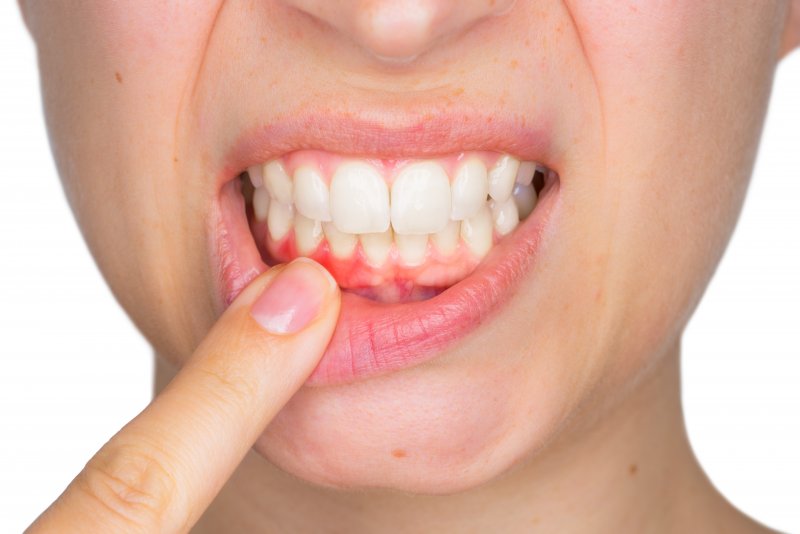
When it comes to oral hygiene, it seems like most people pay close attention to their teeth but don’t focus much on their gums. While preventing cavities is certainly important if you want to keep your natural smile intact for the rest of your life, you also need to be aware of the risks of gum disease in Belmont. When this condition goes untreated, it slowly becomes more and more severe until it eventually grows into a threat to your teeth and your overall health. Read on to learn more about the different stages of gum disease and why it’s essential to seek periodontal care as soon as you have an idea that something is wrong.
Stage 1: Gingivitis
If gum disease is caught while it’s still in the gingivitis stage, it can still be reversed with a thorough dental cleaning and improved oral hygiene habits. This is because the infection is still limited to the gum tissue and hasn’t started attacking the underlying bone yet. Gingivitis occurs when plaque builds up around the teeth and isn’t removed. While you may notice symptoms such as bleeding or swollen gums, in many cases gingivitis is painless, which is why so many people end up ignoring it until it has already advanced to the next stage.
Stage 2: Mild Periodontal Disease
At this point, the infection has reached the bone tissue and started to destroy it. The condition is no longer reversible at this point, but it can still be managed in order to limit the damage and prevent the problem from growing worse. At this point, a deep cleaning procedure is typically required to reduce bacteria levels. This involves scaling the roots of the teeth to remove plaque and tartar buildup; afterwards, the roots are smoothed out via root planing so that there are fewer rough surfaces for bacteria to cling to.
Stage 3: Moderate Periodontal Disease
The bacteria have reached new depths in your mouth, giving them an opportunity to attack not just the bone but also the blood stream. At this point, the effects of inflammation could start to spread throughout your body, which may increase your risk for heart disease and other systemic problems. Scaling and root planing are still viable at this stage, but often gum surgery is needed.
Stage 4: Advanced Periodontal Disease
During the final stages of gum disease, you’re likely to notice symptoms such as swollen gums that ooze pus, overly sensitive teeth, loosening teeth, painful chewing, and severe bad breath. At this point, some of your teeth may have to be removed, and you will most likely have to undergo periodontal surgery in order to completely clean the pockets where bacteria are hiding or grow back some of the bone that was lost.
The faster gum disease is treated by a periodontist in Belmont, the easier it will be to manage the situation and avoid the worst of the long-term damage. Pay close attention to your gums whenever you check your smile in the mirror; if you notice any unusual symptoms, you should have an examination performed right away!
About the Author
Dr. Alexander Schrott is a highly trained periodontal specialist who has undergone training in the United States, Germany, and Switzerland. As a Diplomate of the American Board of Periodontology, he is highly experienced and skilled when it comes to identifying and treating gum disease. If you have concerns about your gums, get in touch with his Belmont practice through his website or by calling (617) 484-9240.
